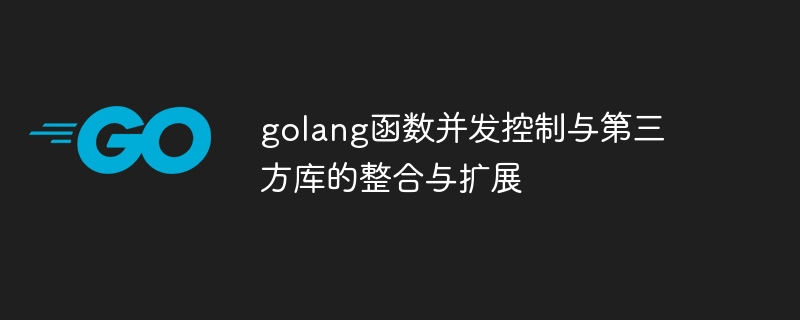Home >Backend Development >Golang >Integration and expansion of golang function concurrency control and third-party libraries
Integration and expansion of golang function concurrency control and third-party libraries
- WBOYWBOYWBOYWBOYWBOYWBOYWBOYWBOYWBOYWBOYWBOYWBOYWBOriginal
- 2024-04-25 09:27:01911browse
Concurrent programming is implemented in Go through Goroutine and concurrency control tools (such as WaitGroup, Mutex), and third-party libraries (such as sync.Pool, sync.semaphore, queue) can be used to extend its functions. These libraries optimize concurrent operations such as task management, resource access restrictions, and code efficiency improvements. An example of using the queue library to process tasks shows the application of third-party libraries in actual concurrency scenarios.

Integration and expansion of Go language function concurrency control and third-party libraries
Introduction to concurrency control
In Go, Goroutine can be used Implement concurrent programming, allowing multiple tasks to be performed simultaneously. You can use tools such as WaitGroup and Mutex in the sync package to implement concurrency control and ensure data integrity.
Integration of third-party libraries
You can use third-party libraries to further expand Go’s concurrency control function. For example:
- sync.Pool: A pool used to reuse allocated structures to improve performance.
- golang.org/x/sync/semaphore: Implement a semaphore to limit the number of tasks that can access resources at the same time.
- github.com/eapache/queue: A non-blocking, high-performance queue for concurrent task management.
Practical case - using queue to process tasks concurrently
The following is an example of using a third-party librarygithub.com/eapache/queue to process tasks concurrently:
package main
import (
"github.com/eapache/queue"
)
func main() {
// 创建一个任务队列
q := queue.New()
// 定义要执行的任务
task := func(data interface{}) {
// 处理数据
fmt.Println(data)
}
// 并发向队列中添加任务
for i := 0; i < 10; i++ {
q.Add(i)
}
// 创建 Goroutine 从队列中获取并执行任务
for i := 0; i < 5; i++ {
go func() {
for {
taskData, err := q.Get(true)
if err != nil {
if err == queue.ClosedError {
fmt.Println("队列已关闭")
return
}
fmt.Println("获取任务失败:", err)
continue
}
// 执行任务
task(taskData)
}
}()
}
// 等待 Goroutine 完成
time.Sleep(5 * time.Second)
}Conclusion
By using third-party libraries and implementing appropriate concurrency control, Go programmers can write high-performance, scalable applications that take advantage of modern multi-core processors.
The above is the detailed content of Integration and expansion of golang function concurrency control and third-party libraries. For more information, please follow other related articles on the PHP Chinese website!

